By Nick Kirkpatrick November 13
A car moves on a serpentine road past snow-capped peaks near Zoji La in India. (Tsering Topgyal/AP)
When Tsering Topgyal was 8, his parents paid a smuggler to take him from his family home in Tibet to India. For weeks, he walked through the Himalayas and eventually crossed the border — a journey thousands of other Tibetans have taken since the Dalai Lama fled Tibet in 1959.
But lately, China has been cracking down on those who want to walk in the Dalai Lama’s footsteps — endangering the prospect of a free Tibet. As Annie Gowen of The Washington Post reported:
Refugees have fled the high Himalayan plateau since the Chinese took control more than a half-century ago, and the 3 million or so who remained have endured forcible relocations, restrictions on Buddhist worship and, in some cases, torture and arrest. Those who have escaped China describe increased restrictions on movement, more surveillance and a rising climate of fear.
Declining numbers of refugees are likely to have a profound effect on the Tibetan diaspora — with an estimated 120,000 living in India alone — who have relied on survivors and their first-hand accounts to help raise support for their cause in the West, experts say.
Now, 18 years later, Topgyal, a photographer for the Associated Press, still does not understand why his parents sent him from his native land. He wrote:
My parents must have had their reasons to send me here; they must have had the best of intentions. But 18 years later, I still don’t know why they did it. They are not political people. They are small farmers who raise barley and a few yak in a rural area not far from Lhasa, the Tibetan capital. I have not seen them since I left.
Tsering Topgyal in New Delhi. (Photo by Tsering Topgyal/AP)
Growing up in a community of other refugees, Topgyal didn’t think much about his parents much when he was younger. When he grew up, he began to miss them, he said. Topgyal wrote:
Today, we occasionally talk on the phone, and that has helped keep us together despite the distance. But long silences often fill our conversations. Over the years, our relationship has only grown more complex, more limited. It is a relationship so many Tibetan refugees understand.
Topgyal began to photograph other refugees who, like him, have not seen their parents since they left Tibet. Here are some of their stories:
Exile Tibetan Dorjee Tashi adjusts the beret he calls his “Che Guevera cap” as he poses for a photograph in front of Tibetan flag in his room in New Delhi. Tashi had just returned from a protest rally when he received news of his father’s death in a voice message. His one wish was to meet his father again — and he considers this unfulfilled wish part of his karma. (Tsering Topgyal/AP)
Tibetan exile monk Lobsang Tenzin, 76, near prayer flags in Dharmsala, India. Tenzin lives in a home for the aged supported by the Tibetan government-in-exile. He fled Tibet in 2006, leaving his family behind. (Tsering Topgyal/AP)
Kalsang, 19, at a Tibetan college library near Dharamsala. She escaped from Tibet in 2004 and said she misses her parents more as she grows older. Kalsang is studying Buddhism, and said it helps her understand the world and control her emotions. (AP Photo/Tsering Topgyal)
Tibetan exile Kalsang Tsering, 20, in his room in New Delhi. Tsering said he missed his family when he was ill in the hospital with no one to care for him. He now rents a room from a woman who treats him like a son, and said the feeling of being cared for is wonderful. (AP Photo/Tsering Topgyal)
Sonam Dolma, 75, near a prayer wheel in Dharamsala. Dolma escaped Tibet in 1959 and made the city her home. She said she wished to visit Tibet someday. (AP Photo/Tsering Topgyal)
Gyalsten, 26, and his sister Kyipa in the dining hall of the Tibetan Youth Hostel in New Delhi. They escaped into India in 2006. Gyaltsen was given the responsibility of taking care of his younger sister. This, he said, has made him a better person. They feared they may never see their parents again. (Tsering Topgyal/AP)
Kalsang Wangdue, 85, in his room in New Delhi. Wangdue came to India in 1959, leaving behind his wife and son. He revisited Tibet in 1993 — his wife and son pleaded he stay, but he returned to India. He said he feels lonely, especially when he falls ill, and sometimes wishes he remarried. (Tsering Topgyal/AP)
Exiled Tibetan Tsering Choephel, 26, in Dharmsala. Choephel left his home in Tibet 23 years ago. Sometimes, he said, he dreams of seeing his family again. Often, he mourns the fact that he barely misses them. He said: “The great tragedy of my life is not being separated from my family, but being separated from the sensibility of missing them, after living without them for decades.”(Tsering Topgyal)
A 27-year-old Tibetan boy, who did not want to disclose his identity, in his room in New Delhi. He came to India in 1992, and said the 22 years away from his family made him strong and emotionless. His mother said she wants to meet him, but he doubts whether he will get a visa. He said he misses his parents when he watches movies featuring families. (Tsering Topgyal/AP)
Tibetan nun Namdak Choeying, 44, in a room she shares with two other nuns in Dharmsala. She escaped to India in 2006. Her five siblings and aged parents live in Tibet, and she said she dreams about being reunited with them. Choeying said she immerses herself in prayers to keep her mind occupied. (Tsering Topgyal/AP)
Tashi Dorjee 27, in a coffee shop in Dharmsala. He fled with his brother as a 4-year-old in 1991. Dorjee said he missed his parents most when he was in school, especially when everyone went home for winter vacation when he had no home to go to. He said because of time and distance, he feels no attachment with family and parents. (Tsering Topgyal/AP)
In Dharamsala, Pema Lhamo, 8, fits herself into a box to reenact her escape from Tibet. Lhamo fled to India when she was 3, and now lives with her grandmother. She studies in a Tibetan Children’s Village School. (Tsering Topgyal/AP)




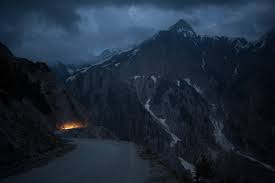




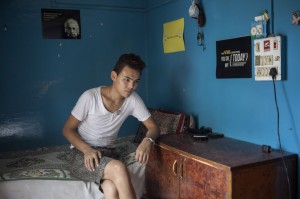
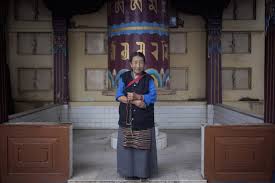
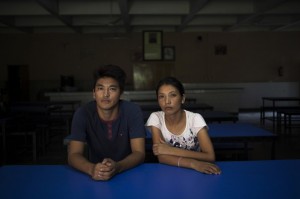

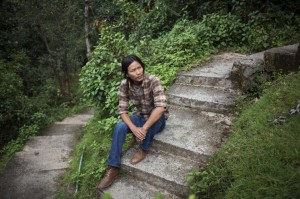

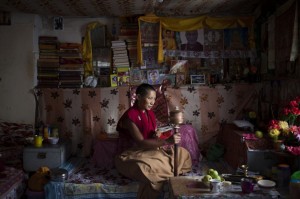
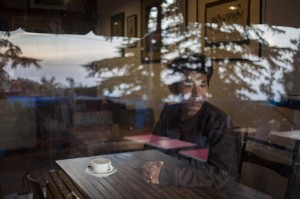
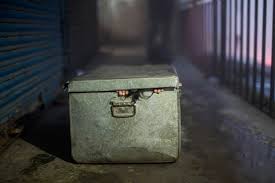
 Print
Print Email
Email